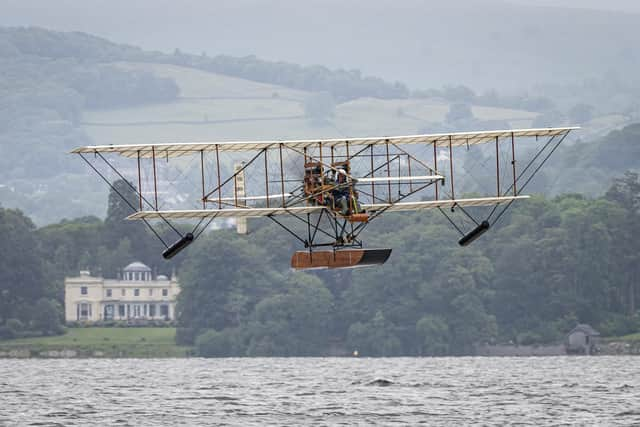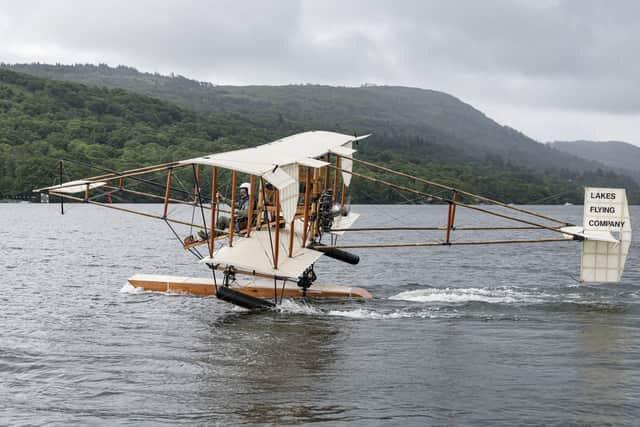Retired Lancaster solicitor is among the brains behind stunning replica of first ever Royal Navy seaplane
and live on Freeview channel 276
The 35ft (10.5m) long ‘Waterbird’ aircraft, which weighs 1000lb (450kg), was taken on a secret test flight above the Lake District where the original was flown 111 years ago.
The Waterbird - made from Bamboo, wood and wires - is the oldest historic replica seaplane in existence and uses all original components apart from its engine.
It took enthusiasts 13 years to construct.
Advertisement
Hide AdAdvertisement
Hide Ad

The plane, which was created by the charitable organisation Wings Over Windermere, will undertake its first public flight on September 22 and 23.
Retired Lancaster solicitor Ian Gee, director of the organisation, said it will give visitors an opportunity to step back in time to “the very earliest days of aviation”.
He said: “After years of painstaking work from our dedicated team, Waterbird will take to the air for two demonstrations in September, and you can be there for this historic moment of magic!
“It has been 111 years since Waterbird flew for the first time, and 28 years since any seaplane flew at Windermere, so you won’t want to miss this occasion.
Advertisement
Hide AdAdvertisement
Hide Ad

“It’s a thrilling opportunity to step back in history to the very earliest days of aviation, when pioneers pushed the boundaries of what was possible through innovation and imagination.
“Waterbird has a lasting legacy that transformed seaplane designs, and now you can see how it all began.”
One of the challenges for the team behind the project has been to remain faithful to the original construction while meeting modern health and safety rules.
But despite this, well-known display and test pilot Pete Kynsey took the replica Waterbird on its maiden flight in secret trials on Windermere on June 13 this year.
Advertisement
Hide AdAdvertisement
Hide AdThe Waterbird was the first seaplane to successfully fly in the UK, and was commissioned by Edward Wakefield from A. V. Roe & Co (‘Avro’), of Ancoats, Manchester.
It was designed as a landplane and then converted to a seaplane at Windermere, and her first historic flight took place on November 25, 1911.
It is now the oldest replica in existence, with the 1929 Hamilton Metalplane H-47 floatplane and the 1935 Caproni Ca.100 floatplane the oldest original seaplanes still flying.
The idea of making a replica was first mooted by Richard Raynsford, the great, great nephew of Captain Wakefield, with a letter to the local paper.
This was then taken up by Ian, who lives in South Lakeland.
Advertisement
Hide AdAdvertisement
Hide AdHe said: “I had always had a passion for seaplanes and knew all about the Sunderland factory on Windermere in the Second World War.
“But I had no idea about these pre-First World War planes which had such an influential role in the history of flying.”
Ian, himself a pilot, is director of The Lakes Flying Company, which was set up after blueprints from the original designs were found in the Wakefield family archives.
Former RAF serviceman Gerry Cooper started building the replica at Wickenby Airfield in Lincolnshire, and he eventually managed to take a short flight, taking off from land.
But Mr Cooper, now 80, and others have had to complete the work of making it capable of taking off from the water.